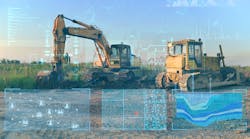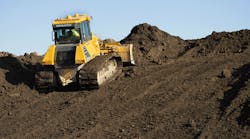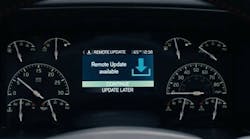In March, Construction Equipment reported that nine of 10 fleets have telematics systems in place on less than half of their equipment. Perhaps even more telling: 77 percent reported less than 10 percent of their equipment was equipped with telematics capability. Although the industry has made great strides in standardizing the input side of the telematics equation, equipment managers and owners are still looking for a standardized, compiled view of their fleet on the output side.
Several years ago, AEMP created a task force and held two Telematics Summits to discuss how to develop a standard for delivery of telematics data. Equipment manufacturers, including Caterpillar, John Deere Construction & Forestry, Volvo CE, and Komatsu Americas, agreed to support the development of a standard for telematics data delivery, and provided resources to help with the actual development of the standard.
I was fortunate enough to work with this group to develop a simple data delivery standard to facilitate the programmatic retrieval of a few vital telematics data points and their importation into the fleet owner’s database. The AEMP Telematics Data Delivery Standard went live in October 2010.
The AEMP standard was only one piece of the puzzle when trying to implement telematics systems into off-road equipment fleets. Although it does allow organizations to import specific machine data, primarily to drive existing reports, the standard does not address the bigger picture of combining all of the sources of data and presenting them in the various reporting formats needed by fleet owners: fleet operations and maintenance, billing, and field operations. The standard was never intended to perform these functions.
It does facilitate the importing of basic data into fleet-information reporting systems for the creation of operating reports, but many fleet managers have come to realize that importing basic telematics data is only part of the puzzle. They must figure out how to combine these data with accounting data and that reported from non-telematics-equipped machines and retrieving it in the form of actionable information. Each department has different reporting needs, a different ideal “dashboard view,” and often a different ideal map view of the organization’s machines.
Based on anecdotal reports, it seems that fleet managers and owners are waiting to fully commit to telematics implementation until they can view their entire fleet on a single output from their enterprise software system, fleet-management information system, or whatever reporting interface they happen to be using. I have yet to speak with a fleet manager who would be satisfied with one system for telematics-equipped assets and another for legacy machines (those older machines not equipped with telematics) or those that never will be telematics-enabled.
As long as we have to use separate reporting systems for telematics-equipped machines and those that are not so equipped, telematics adoption rates are likely to remain low.
Several in the industry recognize this problem and, even now, are working on developing solutions to allow reporting systems to draw all of the data in an organization’s database out to present a cohesive reporting platform that will represent all equipment, whether the data input source is via telematics or pen-and-paper reporting. Several companies already offer such solutions, although they are in the early stages of development.
The wide variety of systems currently in use make it nearly impossible to completely eliminate the need for some level of customized programming at the input/output level from the database. Fortunately, some very bright folks are working on this problem, and each step toward industry standardization will simplify the job of those who ultimately will need to do the final customized installation to integrate the data input and information output, due to the wide variety of fleet information reporting systems, accounting systems, and enterprise software solutions in use in today’s businesses.



